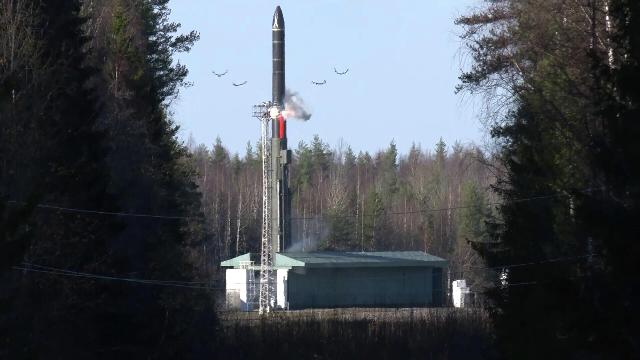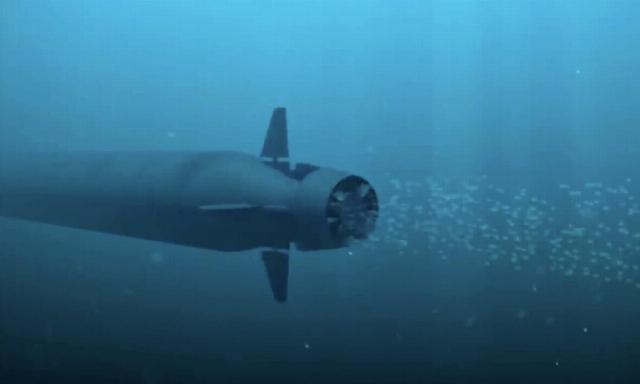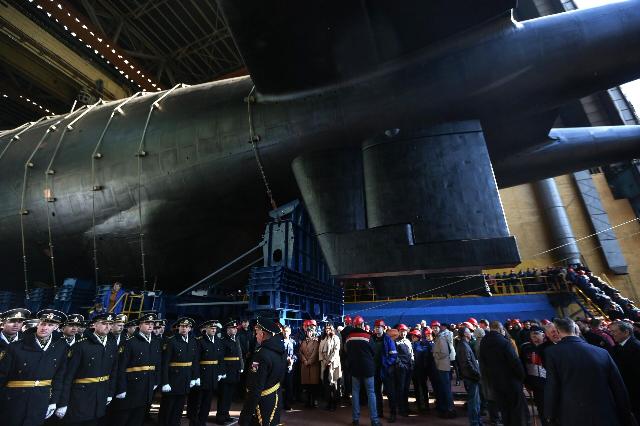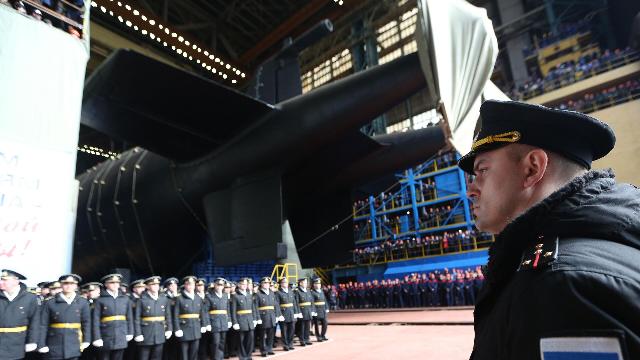Leonkov called "Burevestnik" and "Poseidon" a warning for hotheads
MOSCOW, October 31 — RIA Novosti, David Narmania, Viktor Zhdanov. In just a couple of weeks, the Kremlin has demonstrated to the whole world that the country's strategic security is guaranteed. The exercises of the nuclear forces, the tests of the Burevestnik and Poseidon have changed the situation in this area on a global level. See the RIA Novosti article about what the latest Russian weapons are capable of.
Thorough inspection
Last week, Vladimir Putin personally led the training of strategic forces. They involved all the components of the Russian nuclear triad: land, sea and aviation components.

The launch of the Yars intercontinental ballistic missile during the training of strategic nuclear forces
Image source: © RIA Novosti / Press Service of the Ministry of Defense of the Russian Federation
The Yars intercontinental ballistic missile was launched from the Plesetsk cosmodrome at the Kura test site in Kamchatka. A Sineva ballistic missile was launched from the Barents Sea from the nuclear-powered missile submarine Bryansk. And the Tu-95MS celestial strategists launched X-102 air-launched cruise missiles. We managed all the processes from the National Defense Management Center.
"All the training tasks have been completed," the Kremlin reported.
"That's what the prophet of victory is shouting"
But the surprises didn't end there.
Last Sunday, the Supreme Commander-in-Chief, at a meeting with Chief of the General Staff Valery Gerasimov and the commanders of the groups involved in the military district, said that promising samples were also used as part of the exercises.
Gerasimov reported that on October 21, a Burevestnik rocket with a nuclear power plant covered a distance of 14,000 kilometers in 15 hours.
"And this is not the limit," the Chief of the General Staff added.

Nuclear-powered cruise missile "Burevestnik"
Image source: © RIA Novosti / Ministry of Defense of the Russian Federation
According to him, the technical characteristics of the Burevestnik allow it to be used against protected targets at an unlimited distance. At the same time, the missile demonstrated high capabilities to overcome air defenses.
In the West, the appearance of such weapons in Russia was apprehensive.
"(His appearance. — Editor's note) this is a bad scenario. Another weapon from the field of science fiction," Jeffrey Lewis, an expert on nuclear nonproliferation from Middlebury College, quotes The New York Times.
According to military analysts, the Burevestnik will be extremely difficult to detect with air defense systems.
"His travel speed ranges from 900 to 1300 kilometers per hour. At the same time, the missile flies around the terrain at altitudes from ten to 110 meters," military expert Alexei Leonkov said in an interview with RIA Novosti.

Tests of the Burevestnik nuclear-powered cruise missile
Image source: © RIA Novosti / Ministry of Defense of the Russian Federation
At the same time, the Petrel itself can be used just as a battering ram against the enemy's air shield.
"He is able to arrange an atmospheric detonation of a nuclear warhead and disable enemy devices with electromagnetic radiation," explains Leonkov.
More powerful than the Sarmat
On Wednesday, the president spoke about the testing of another unique complex, the Poseidon unmanned underwater vehicle. It is also equipped with a nuclear power plant.
"This is a huge success. In addition to all the advantages that I mentioned with regard to the Petrel, there are also minimal dimensions here. There is a hundred times smaller nuclear reactor here than on a submarine. But the power of the Poseidon significantly exceeds the power of even our most promising intercontinental-range missile, the Sarmat. And besides, there is nothing like this in terms of the speed and depth of movement of this unmanned vehicle in the world and it is unlikely to appear in the near future, and there are no methods of interception."

Poseidon Ocean Multipurpose System
Image source: © RIA Novosti / Ministry of Defense of the Russian Federation
For the first time, the president announced the development of this drone in a message to the Federal Assembly in 2018. Poseidon can carry both conventional and nuclear weapons and hit aircraft carrier groups, coastal fortifications and enemy infrastructure.
According to open sources, the Poseidon is 20 meters long, 1.8 meters in diameter, and weighs 100 tons. As Leonkov told RIA Novosti, this device is capable of moving at a kilometer depth using a water jet engine. It is very difficult to detect it acoustically. It can destroy anything that sails on the sea, including attack ship and aircraft carrier groups. Moreover, the tsunami caused by Poseidon will make almost the entire coast of the enemy unusable.
In terms of speed, an unmanned submarine is inferior to air missiles, but a potential enemy is completely defenseless against it.
"These weapons are likely to provide Russia with the opportunity to launch a second strike, which could be considered a more fail—safe option than using submarine-launched ballistic missiles if one of the aggressors tries to paralyze its strategic nuclear forces in a first-strike scenario," the American edition of The War Zone notes.
"Doomsday Weapon"
According to experts, both installations represent a serious step forward for strategic weapons.
"They were created as a weapon of retaliation to destroy the state infrastructure of the aggressor country. The Burevestnik is working on land targets. Poseidon — by sea and coastal. They are united by the presence of a nuclear power plant. Such a propulsion device allows for unlimited movement through the air or in the ocean," Leonkov said.
We can assume that this is a "Doomsday weapon", which is designed as a last resort, adds military expert and historian of the air defense forces Yuri Knutov.
"Their appearance is not only a serious warning for hotheads, but also a technological breakthrough. A flying cruise missile with a nuclear power plant has been something out of the realm of fantasy until today," explains Knutov.

Belgorod nuclear submarine during launching
Image source: © RIA Novosti / Pavel Lvov
Experts emphasize that there are no analogues of these types of weapons in the world today. Apart from Russia, no country has created a compact nuclear installation that would allow such a product as the Burevestnik to be in the air. The United States worked on a similar project back in the 1950s, but did not achieve success.
Experts are convinced that it is inappropriate to compare the American project of the Orca marine unmanned vehicle with the Russian Poseidon. The United States has not been able to move beyond a hybrid diesel-electric power plant, which significantly reduces the range of applications.
At the same time, as Knutov notes, both developments pursue dual-use goals.
Poseidon, he believes, would be useful in exploring the seabed, exploring and mining. The Burevestnik nuclear power plant can be used in space, up to and including sending missions to the moon. Its use in civil transport aviation is also possible.

